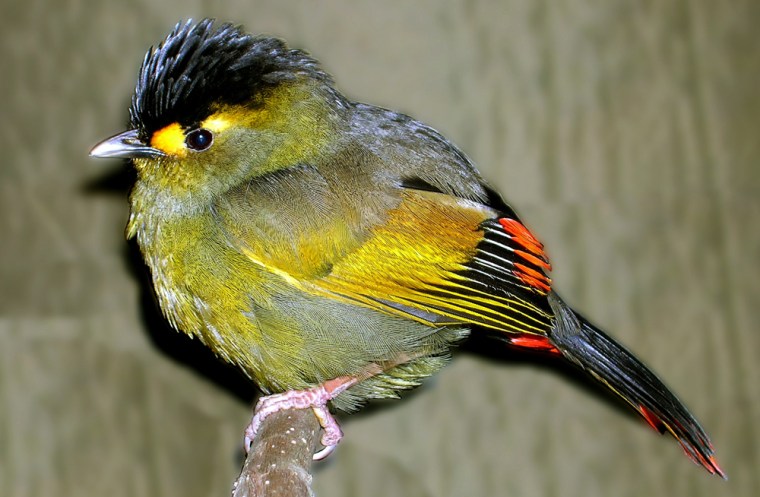A striking multicolored bird has been discovered in India’s remote northeast, making it the first ornithological find in the country in more than half a century, experts said on Tuesday.
The Bugun Liocichla, scientifically known as Liocichla bugunorum, a kind of babbler, was discovered in May at the Eaglenest Wildlife Sanctuary in India’s hilly state of Arunachal Pradesh, bordering China.
The bird -- with olive and golden-yellow plumage, a black cap and flame-tipped wings -- is 8 inches long and was named after the Bugun tribespeople who live on the sanctuary’s periphery.
Birdlife International, a conservation group, described it as “strikingly colored. Its overall plumage is various shades of olive, with a black cap, bright yellow patch in front of the eye, golden-yellow, crimson, black and white patches on the wing, and red-tipped tail feathers which are flame-colored on the underside.”
Ramana Athreya, a professional astronomer and keen birdwatcher, discovered the bird and said that although two Bugun Liocichlas were caught and examined at the sanctuary, both were released and no scientific specimen collected.
Too rare to kill
“We thought the bird was just too rare for one to be killed (for scientific study),” said Ramana. “With today’s modern technology, we could gather all the information we needed to confirm it as a new species. We took feathers and photographs, and recorded the bird’s song.”
Though the bird was discovered in May, the news was kept under wraps until it was confirmed that it was a new species.
Athreya wrote a paper that was circulated among foreign and Indian experts, including Pamela Rasmussen, assistant curator of mammalogy and ornithology at Michigan State University and author of The Ripley Guide of Birds of South Asia.
The experts verified the Bugun Liocichlas as a new species and the International Commission on Zoological Nomenclature then approved the name.
“The discovery of a new bird is really special,” said Aasheesh Pittie, editor of the journal Indian Birds, where the description of the Bugun liocichla was published. “But when it’s a stunning species with no geographically close relatives, and in a part of the world where bird collectors have sampled birds for more than a century, it’s nothing short of miraculous.”
The last new bird species to be discovered in mainland India was the Rusty-throated “Mishmi” Wren-babbler Spelaeornis badeigularis in Arunachal Pradesh in 1948.
The known population of the Bugun Liocichla consists of only 14, including three breeding pairs.
Ramana first sighted the bird at the sanctuary in 1995 but it was more than a decade before he saw it again.
“Even then I knew it was something very special,” he said. “The only bird that looks remotely like it is the Emei Shan liocichla, which is known from only a few mountains in central China, more than 1,000 kilometers (620 miles) from Eaglenest.”
Highway project a threat
Ramana failed to spot the birds again until May 2006 when he eventually succeeded in trapping two birds with nets.
International bird conservation groups are elated.
“A priority now is to find out if other populations of this remarkable species exist elsewhere and what its habitat requirements are, so that appropriate conservation measures can be put in place,” said Nigel Collar of Birdlife International.
Potential threats include a plan to build a highway through Eaglenest.
